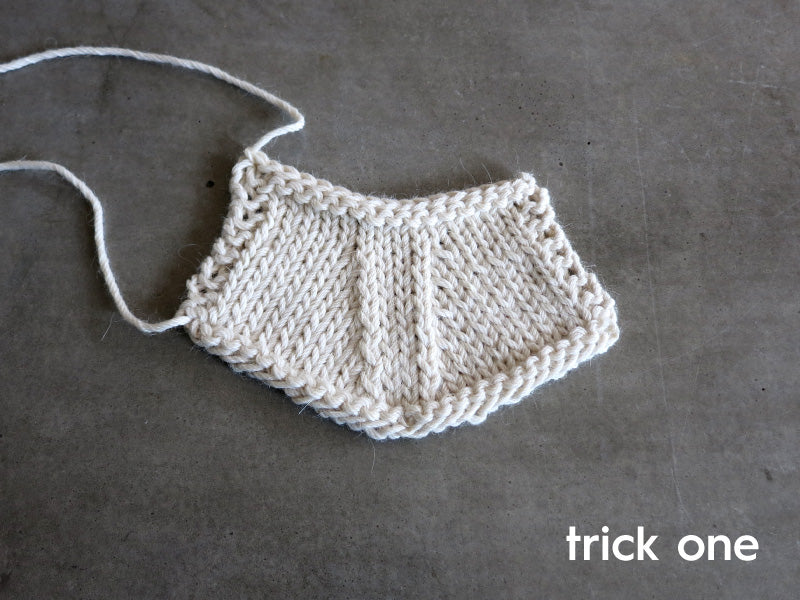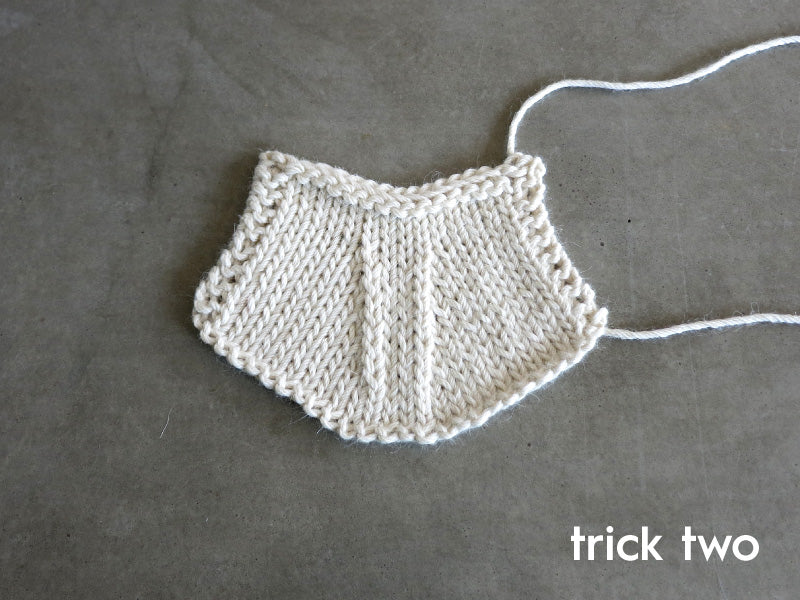Does your k2tog look neater than your ssk? Depending on how you knit, this neater way to ssk may neaten up your decrease stitches – give it a try!
Check out our Cocoknits patterns for some knitting inspiration.
Does your k2tog look neater than your ssk? Depending on how you knit, this neater way to ssk may neaten up your decrease stitches – give it a try!
Check out our Cocoknits patterns for some knitting inspiration.
I use this technique whenever a left-leaning decrease is required.

Slip 2 stitches individually as if to knit.


Insert left needle tip into the fronts of these 2 slipped stitches.


Knit the 2 slipped stitches together; 1 stitch decreased. To neaten this decrease on the next round or row, work this stitch through the back loop.

Here are two tricks to try:

Place your left needle into the front of the slipped sts and knit them together. This helps the ssk lie a little bit flatter.

If you want to go one step further to improve your ssk’s, try Trick Two which happens on the row/round following the ssk.

On the RS work a ssk, either the traditional way or as in Trick One.

In the following row/round:
Comments
I’ll check it out, thank you!
Hi Jo,
You are in luck! We have more methods for you to try with your hat. Julie did another tutorial on “How to Work an Alternative SSK” here: https://cocoknits.com/blogs/knit-tutorials/how-to-work-an-alternative-to-ssk.
Option 3 is a similar idea to purling through the back loop. Enjoy your ssk adventures!
Hi! I just used the neater way, trick 2 on my project and I’m mad in love with how it looks. It got me thinking that maybe you can help with a time where it did not work. Last year I had several tries at making the Manhattan Hat, it asked for a ssk on top of a ssk in the round so I wasn’t able to go tbl on the next round. all my stitches immediately before the ssk would blow out so i’d have these shocking gapes before all the decreases. Any suggestions when trick 2 can’t be applied?
You’re welcome!
Thank you
Hi Gayle,
We suggest you experiment with the techniques here and in the tutorial
How to Work an Alternative to SSK. We think the sl, k, psso might work well. You could also try slipping the first slip as if to purl to see if that gives you a similar effect to knitting into the back loop on the next round. Good luck!
Thanks so much. I have a question. When doing the toes of socks how would one do the rows where you do an SSK on each row ?
Check out our new tutorial “How to Work an Alternative to SSK” for a video and more ideas.
Priscilla Bouic, when slipping the knit stitch and replacing it back to the LHS needle which ‘leg’ is in front.
Thank you, Priscilla, for sharing your “best way”. I tried it and love how it looks!
In answer to Patriicia, about the SSK:
SSK is a fairly new invention in the knitting world. When I was growing up and learning to knit in the late 1930s and early 40s’ the only left decrease was Sl 1 purlwise, k1, pass the sl st over (SKP). Many fabulous knitters and designers, such as Sally Melville, still use this today, even though their publishers insist on writing it as SSK. By the time I was retired and returned to knitting a lot, the SSK was the “gold standard.” But it is NOT!!!! The best way is to slip only the first stitch knitwise, return st. to left needle and K2 tog TBL. The underneath twisted stitch tightens up the top stitch tension so it is not loose and wonky, and the look of it matches the K2 tog.
In addition, on the next row for a sock or sweater, you need to work the stitch above the SSK as TBL so it will lean in the same way as the SSK, making a nice smooth line up the garment.
Yet somehow the SSK (slipping both sts k-wise) persists as the standard for writing patterns.
Hope this helps in understanding about the SSK.
Thank you so much, I was very confused, haven’t come across SSK before. I’ve been knitting since I was 8 years old, I am now 75!
Thank you so much for a great explanation.
Thank you! Both methods made a big difference!
Leave a Comment